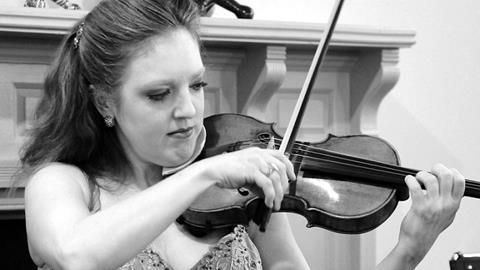The US violinist advocates emphasising either the top or bottom lines when practising double stopped scales to anticipate more accurately what occurs in the repertoire

We spend all of our double-stopped scale and etude practice making sure that the two voices are equal,' says Rachel Barton Pine. 'For example, when playing Carl Flesch scales in 3rds and 6ths, we make sure that both of the two strings are equally balanced.
'But wouldn’t it be useful if in addition to playing balanced double-stops, we also played these scales making sure that our lower string was a lot louder than our upper string - but consistently so, and in a controlled way - and then did that same scale a third time, making sure that our upper string was a lot more present and our lower string secondary.
'In real music, when we’re playing double-stops, sometimes one or the other of those voices is the melody voice and the other is not, and we have to adopt an unbalanced approach. We really ought to incorporate this into our technical work so that we can actually draw upon that ability when necessary. The whole purpose of our technical work is to absorb these skills into our bodies so that we have them at our fingertips when it comes to the repertoire.
'You could rotate this practice - playing your 3rds and 6ths on the first day in equal voices; next time, you could emphasise the lower voice; the time after that you could emphasise the upper voice. I really think this would be so very helpful.'
Rachel Barton Pine marks up sheet music for Mendelssohn's Violin Concerto with bowings, fingerings and ideas for interpretation in The Strad's April issue Masterclass, out now - download on desktop computer or through The Strad App.
































No comments yet